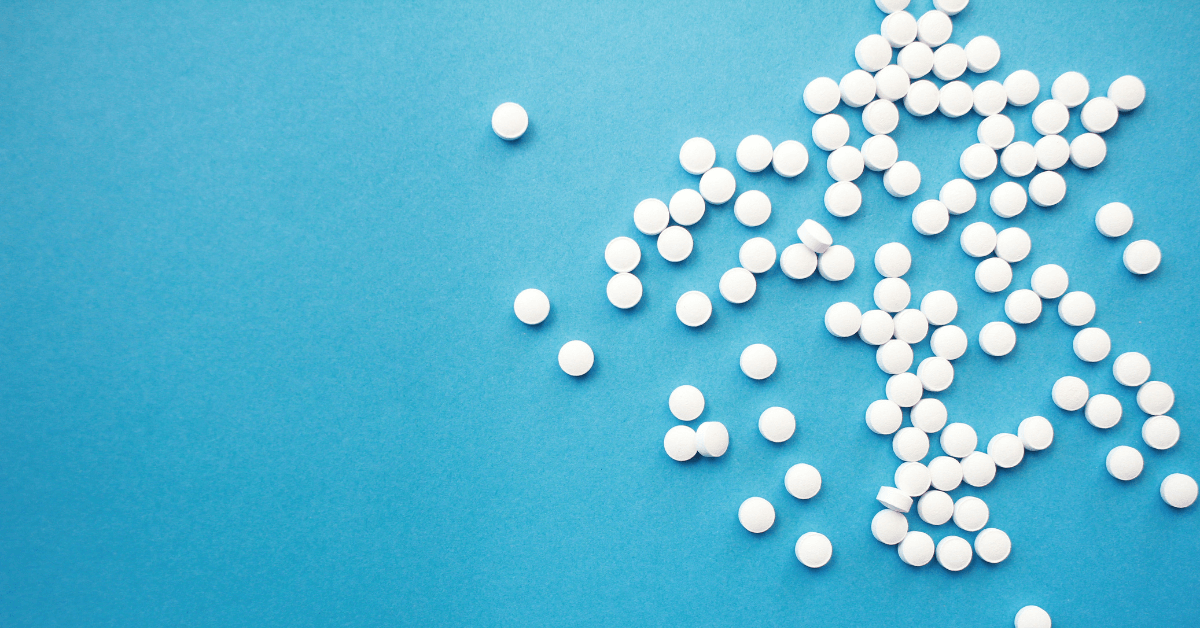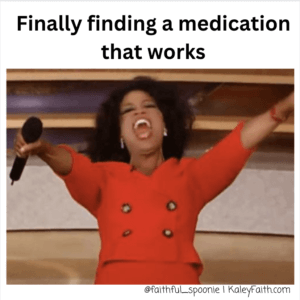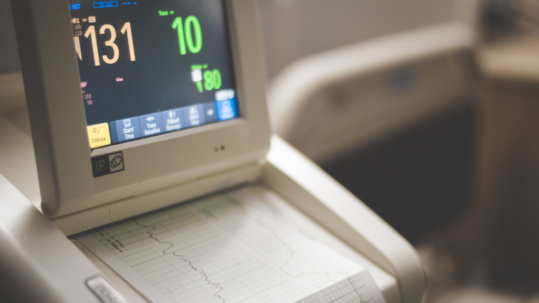
17 Dec Midodrine – The POTS Medication That Works for Me
Without a doubt, midodrine has been crucial to the management of my postural orthostatic tachycardia syndrome. Now that I have been on it for 2 months, I can confidently say that I experience significant benefits, minimal side effects, and am overall pleased with it. (Update: 8 months later, and it continues to be very helpful)
Does it cure my POTS? No.
Does it improve quality of life and allow me to be more productive? Definitely.
Noticeable benefits
The classic debilitating symptom of POTS is tachycardia, but funky blood pressure is certainly right there with it. After unsuccessful attempts to treat me with beta-blockers (read the summary here), my doctor decided to pivot and try midodrine instead, which works to constrict the blood vessels in the body and raise blood pressure.
While I don’t technically have orthostatic hypotension, I was averaging a blood pressure around 90/65 mmHg with daily drops into the 80s/40s that made me feel truly awful. Now that I am on midodrine, my average has hovered around 110/70 and I am LOVING IT. We believe this blood pressure increase had a few impacts:
First (and most importantly), I have relief from the strong lightheadedness AND tachycardia that I typically experience upon making a change from lying to sitting or sitting to standing. Being that midodrine doesn’t necessarily target heart rate, I was surprised at how much it seemed to reduce the suffocating pounding sensation. While not 100% resolving the problem, the improvement has been marked.

Second, the fatigue has improved. I have noticed I am not as thoroughly and consistently drained in every fiber of my being. I still have chronic fatigue syndrome (indicating I never feel truly well-rested, struggle with energy throughout the day, etc), but I am finding it a bit easier to cope.
Third, it has resolved the mid-day “floop.” Before midodrine, I would hit a daily wall that could not be avoided. It would come on suddenly, knock me straight to the floor, and would take about an hour of laying down with my feet up to bounce back from. Often my blood pressure would fall well below the hypotensive threshold and I would find myself overly emotional (whether teary, agitated, or both). I can proudly say that this has been greatly improved.
Fourth, it (potentially) helped resolve my migraines. After telling my doctor at Mayo Clinic that I believed beta-blockers (metoprolol and propranolol) had given me persistent migraines, he observed that a potential reason could be that the lowered heart rate caused a lowered blood pressure which caused a lack of sufficient oxygen to the brain, thereby causing migraines. Certainly, it’s just a theory, and another possible explanation might be the discovery of a parotid tumor wrapped around my facial nerve which I had surgery to remove. The timelines were similar, although the combination of resolving the two seems to have dramatically helped the migraines.
Side Effects
Despite being warned about it beforehand, I was still a little surprised by the goosebumps I experienced within an hour of taking my first dose. Due to the fabulous mechanism of blood vessel constriction that helps mitigate POTS symptoms, a common side effect of taking midodrine is to have itchy scalp or get goosebumps. Sure enough, it felt like little bugs were having a party in my hair, and like little centipedes were having races up my arms and legs. But HAVE NO FEAR! Not only did this feeling go away within a week or two (and the sensations themselves come and go for only a few minutes at a time), but the relief from symptoms almost immediately outweighed the gross feeling.
When asked how the new med was going, my go-to phrase was “I would SO much rather feel a bit creepy than like I’m dying!” and I meant it! The resolution to the pounding heart and daily near-blackouts was substantial. And as I neared my next dose, I found myself looking forward to taking it and anticipating feeling refreshed and ready to press on in the day…despite getting the creepy crawlies.
Nowadays I don’t experience the goosebumps at all, and I can genuinely say that I don’t experience any other noticeable side effects.
One side effect that I was warned about is “supine hypertension” (high blood pressure while lying down), and so I was told to be very careful reclining and/or lying down because midodrine could cause my blood pressure to go TOO high. Lying down and taking mid-day naps had been such an important part of my day-to-day coping, and so I was a little nervous that I would be removing the one thing that made each day manageable. But thankfully, not only has midodrine helped me not need these periods of being flat, but I’ve discovered that when needed, I can still safely lay down without having concerning hypertension. A blood pressure cuff has been helpful throughout this learning process.
Dosage
I started by taking 2.5mg twice daily, but I noticed that I would hit a bit of a slump in between doses. We increased the frequency to three times a day (7am, 12pm, and 5pm), which smoothed out the highs and lows. After a recent appointment with my doctor, we have decided to try increasing my 7am dose to 5mg (while keeping the other two doses at 2.5mg) to see if we can even further expand my daytime functionality. I look forward to seeing how that will go. (Update: we increased my dose to 5mg, 3 times per day. After five months, this continues to be the right dosage.)
Summary
Personally, unmedicated POTS has consistently provided me with a poor quality of life consumed by constant daily management of lightheadedness, pounding/tachycardic heart, and a host of issues such as fatigue, nausea, hypotensive crashes, blood pooling, and more. I am very grateful to be on midodrine in this season, and look forward to building on this new foundation to expand my ability to be productive and live each day well. It is my hope that I will soon be able to look beyond daily survival and start dreaming about taking classes, getting involved in community events, and maybe, just maybe, even having a part-time job.
If you’re at wits end looking for a medication option for POTS, midodrine may be something to talk to your doctor about. Especially if you deal with lower blood pressure, I believe it has the potential to be a helpful part of your recovery. I’m not a doctor though, so be sure to consult the appropriate professional 🙂
For more ideas on POTS symptoms management, check out my article My 8 POTS Essentials.
-
Making a Full Physical Recovery – A Day-by-Day Miracle
“You should exercise more.” A brutal statement. One I had tried to fulfill on my own, and time and time again, had failed. It was a frustrating piece of advice from my doctor, and felt so out of reach as I navigated my bouquet of chronic illnesses....
27 June, 2024 No comment -
Awesome Recovery News!! And Why I No Longer Plan To Write About My Symptoms
I am so excited to report that after graduating from the 3-week Pain/Symptom Rehabilitation Center at Mayo Clinic in Rochester and continuing the program at home, I am nearly 100% recovered!...
05 March, 2024 3 Comments -
What is the Valsalva Maneuver like?
The Valsalva maneuver is EASILY the most fascinating thing I’ve gotten to do in this entire medical adventure. On the surface, it’s a fairly quick and easy part of autonomic testing, but underneath, it’s one of the coolest and most complicated mechanisms of the human body that I’ve encountered. ...
17 January, 2024 3 Comments






Pingback:Mayo Clinic for POTS - An Overview of My Experience - Kaley Faith
Posted at 21:07h, 17 December[…] new medication and to check in and see how things are going {Update: new med is working! Read more here}. I will also be pursuing insurance approval for the 3-week rehabilitation program that I was […]
Pingback:My 8 POTS Essentials - Kaley Faith
Posted at 22:46h, 17 December[…] addition, the medication I am now on for POTS (called Midodrine) is one that raises blood pressure, so knowing my numbers at home is vitally important to me in […]
Pingback:POTS Treatment Summary - Metoprolol and Propranalol (Part 3 of 3) - Kaley Faith
Posted at 16:44h, 21 January[…] UPDATE : the migraines significantly improved after beginning Midodrine, so there is a potential that the low blood pressure was causing the attacks. Additionally, I have […]